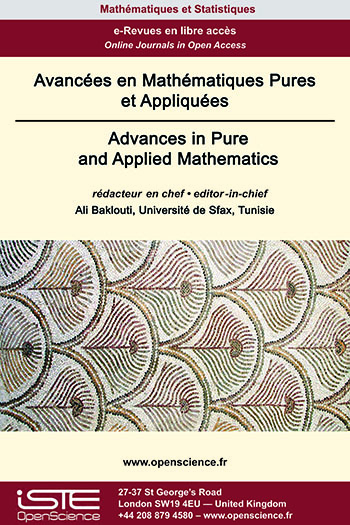

Mathematics > Home > Advances in Pure and Applied Mathematics > Issue
In this paper we study warped products endowed with a new semi-symmetric non-metric connection, which, we called Diallo-Massamba connection. We establish relationships between the Diallo-Massamba connection of the warped product to those of the base and the fiber. Also, we derive the curvature formulas for warped products with the Diallo-Massamba connection in terms of curvatures of its components. Examples of Diallo-Massamba connection are also given.
The aim of this paper is to give an overview of some inequalities about $$$L^p$$$-norms ($$$p$$$ = 1 or $$$p$$$ = 2) of harmonic (periodic) and non-harmonic trigonometric polynomials. Among the material covered, we mention Ingham’s Inequality about $$$L^2$$$ norms of non-harmonic trigonometric polynmials, the proof of the Littlewood conjecture by McGehee, Pigno and Smith on the lower bound of the $$$L^1$$$ norm of harmonic trigonometric polynomials as well as its counterpart in the non-harmonic case due to Nazarov. For the later one, we give a quantitative estimate that completes our recent result with an estimate of $$$L^1$$$-norms over small intervals. We also give some stronger lower bounds when the frequencies satisfy some more restrictive conditions (lacunary Fourier series, “multi-step arithmetic sequences”). Most proofs are close to existing ones and some open questions are mentionned at the end.
In this note we revise the perturbation result of [7] on the prescribed Branson-Paneitz curvature problem on the n-dimensional unit sphere, $$$n$$$ ≥ 6. We remove condition (A1) of ([7], Theorem 1.3) and we prove an entirely new perturbation theorem.

2025
Volume 25- 16
Issue 1 (January 2025)2024
Volume 24- 15
Issue 1 (January 2024)2023
Volume 23- 14
Issue 1 (January 2023)2022
Volume 22- 13
Issue 1 (January 2022)2021
Volume 21- 12
Issue 3 (Special AUS-ICMS 2020)2020
Volume 20- 11
Issue 1 (May 2020)